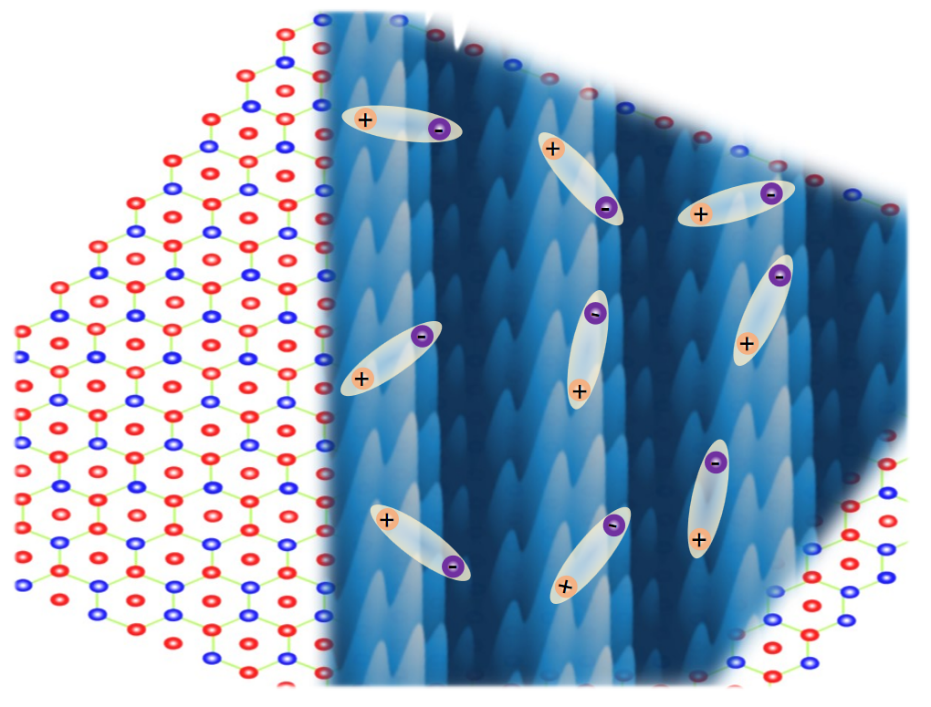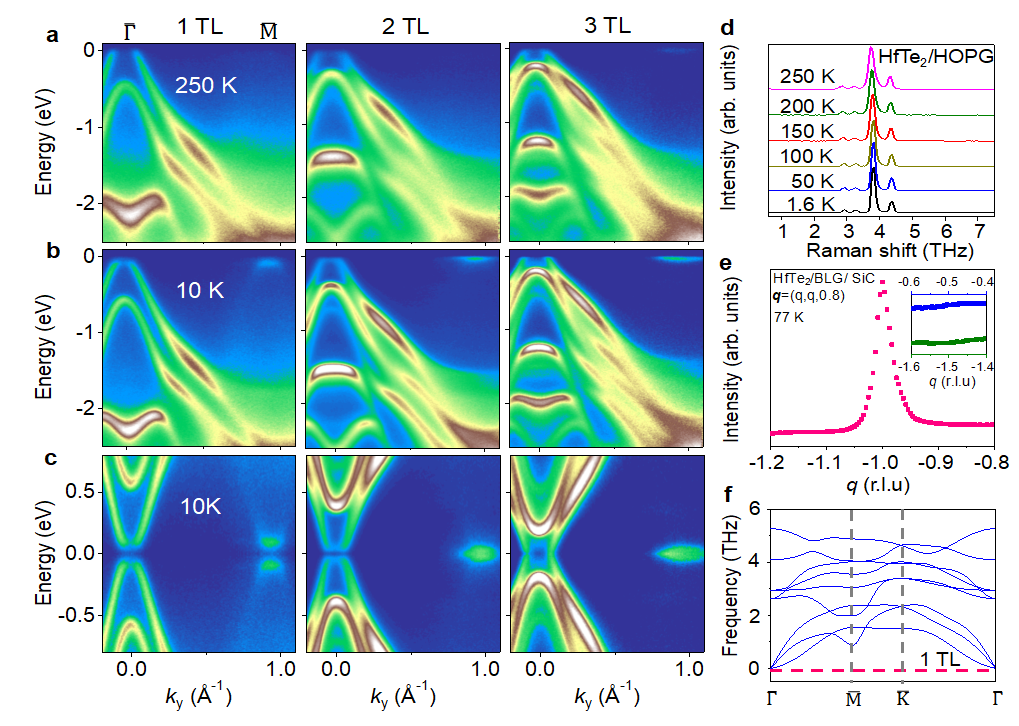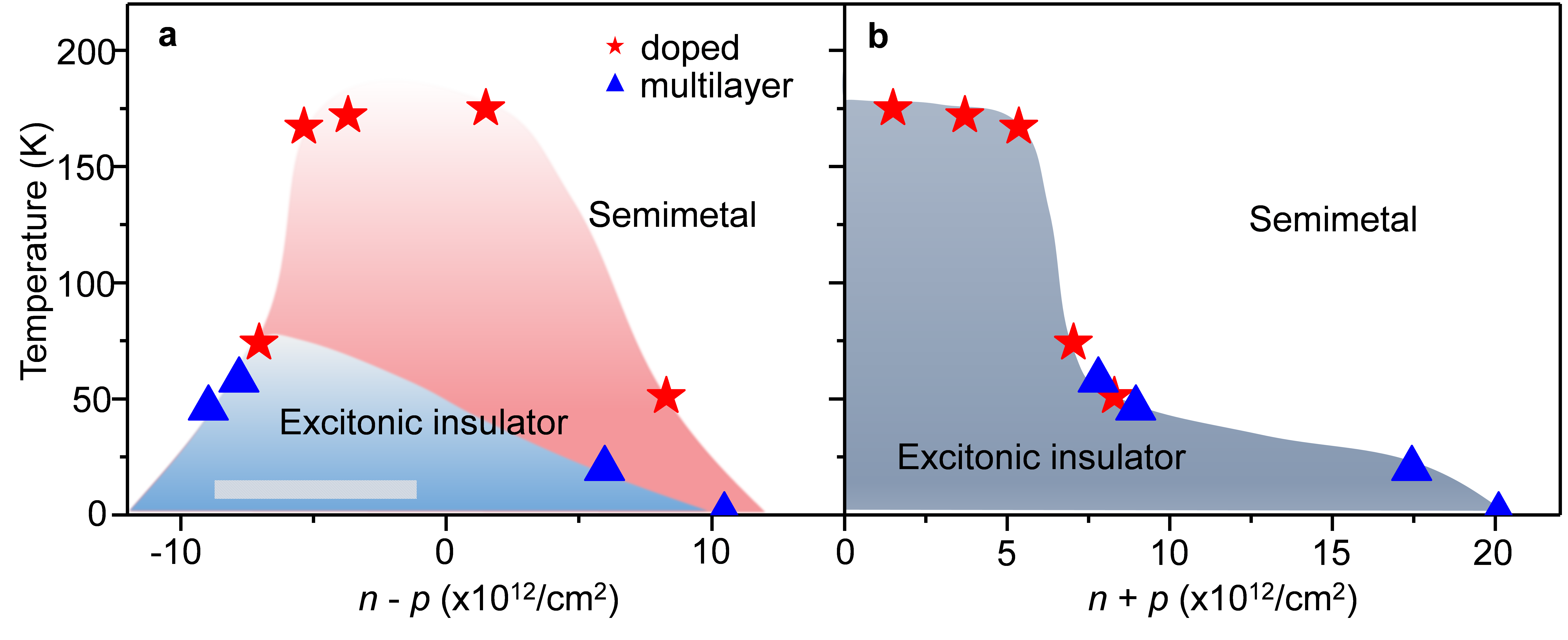
Recently, the research group led by Professor Peng Chen from the School of Physics and Astronomy at Shanghai Jiao Tong University discovered charge density waves and metal-insulator transition phenomena induced by exciton condensation in low-dimensional HfTe2 thin films. The research findings, titled "Observation of possible excitonic charge density waves and metal-insulator transitions in atomically thin semimetals," have been published online in the Nature Physics journal on January 23, 2024.
In semimetals, when the carrier concentration around the Fermi surface is sufficiently low and cannot effectively screening the Coulomb interaction between electron-hole pairs, the exciton will spontaneously condense at low temperatures and form a so called excitonic insulators with many-body interaction. Unlike traditional Cooper pairs in superconductors, excitons have a larger binding energy, making them conducive to condensation at higher temperatures. Therefore, the study of excitonic insulators is of great importance for understanding phenomena such as high-temperature superconductivity and superfluidity. However, evidence for the existence of excitonic insulators and the corresponding materials has been lacking.

Schematic diagram of exciton condensation and charge density waves in monolayer HfTe2 thin film.
The condensation of excitons with non-zero momentum simultaneously generates charge density waves (CDW). The formation of CDW in materials has various reasons, such as Fermi surface nesting, lattice distortions, etc. and exclusion of other CDW formation mechanisms is the key to identify the existence of exitonic insulator. The research team have conducted a series of studies on two-dimensional transition metal disulfides including TiSe2 and ZrTe2 (Nat. Comm. 6, 8943 2015, Nat. Comm. 14, 994 2023) to explore this novel phenomenon. Unfortunately, lattice distortion is still evidenced in the calculated phonon dispersions although it might not be the main driving force in these materials.
By reducing the material dimensionality to mitigate screening effects and promote exciton condensation, the research team successfully prepared single-layer and multi-layer HfTe2 thin films. Angle-resolved photoemission spectroscopy (ARPES) measurements revealed a metal-insulator transition when the thickness was less than 3 layers. The valence band top formed a flat band at low temperatures, opening a gap near the Fermi surface. Additionally, folded bands appeared near the ![]() point, a typical feature of CDW formation. Phonon calculations showed that single-layer HfTe2 does not have structural instability. Raman and X-ray diffraction measurements did not observe significant lattice distortions, providing strong evidence for the electronic origin of the metal-insulator transition in single-layer HfTe2.
point, a typical feature of CDW formation. Phonon calculations showed that single-layer HfTe2 does not have structural instability. Raman and X-ray diffraction measurements did not observe significant lattice distortions, providing strong evidence for the electronic origin of the metal-insulator transition in single-layer HfTe2.

ARPES spectra of HfTe2 thin films with different thicknesses and experimental evidence of lattice stability in monolayer films.
A notable feature of exciton condensation is the sensitivity to carrier concentration near the Fermi surface. A small number of carriers and balanced concentration of both n-type and p-type carriers can in principle benefit the exciton condensation. The research team found that a small amount of n-type doping significantly increased the transition temperature of single-layer HfTe2, which is different from other types of transition mechanism like Peierls-type CDW. This typical excitonic insulator discovered by the research team lays the foundation for further studies on the exotic quantum effects raised by the interactions between excitonic insulating states and other orderings such as topology and spin-correlated states.

Phase diagram of the transition temperature of HfTe2 thin films with varying carrier concentrations.
Paper link: https://www.nature.com/articles/s41567-023-02349-0




